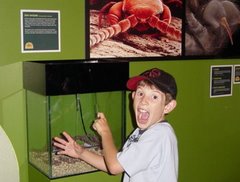This question from Georgina Bishop, Natural History Museum, London: Hi Lynda, Hope all is well with you. I am gathering some information on Biodiversity exhibitions as we are in the beginning stages of developing a brief for one that will happen as part of the NHM's masterplanning. I think that you also have a Biodiversity exhibition and I wondered if it would be possible for you to send me any front-end research you did as part of this.
Hi Georgina and I am well thanks! I have chosen to blog my response so others can have access.
We did a series of studies for our former Biodiversity: Life Supporting Life exhibition as follows:
- Frontend evaluation report, 1997: concepts, themes, prior understanding and interpretive approaches
- Formative evaluation report 1 1997: concepts, population issues and interpretive strategies
- Formative evaluation report 2, 1998: topics and concepts, merchandise and exhibition title
- Formative evaluation report 3, 1998: text, label and graphics testing
- Summative evaluation, 1998
These files have now posted on my wiki at a new page called Evaluation reports. When reading them you need to keep in mind the time they were conducted. I think many of the topics and understandings that we tested at that time would be vastly different now. For example, the issue of climate change was not really even thought about then. We have done work on climate change which I have blogged about here, so I would also reference that work when you are looking at biodiversity.
There is also a project called Who Cares about the Environment? run by the NSW Department of Environment and Conservation that has been tracking attitudes to, knowledge of and skills and behaviour of adults regarding the environment over many years and is worth checking out. I'm sure there have been studies of this kind in the UK too. The Pew Internet/Exploratorium report The Internet as a Resource for News and Information about Science is also relevant as it showed that 20% Americans used the internet to find out information about science, including environment and climate change issues (second only to television at 41%) and this has implications for the conjunction of physical exhibitions and what museums provide on the web I believe.
Good luck.



No comments:
Post a Comment